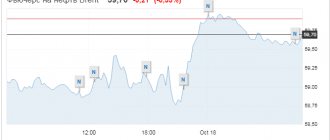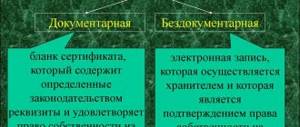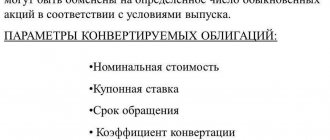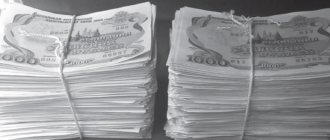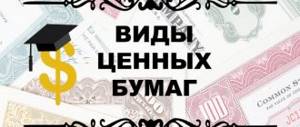The American securities market deservedly attracts investors from all over the world, including many Russians. For better or worse, today the world's largest exchanges (NYSE and NASDAQ) are located here.
The American securities market deservedly attracts investors from all over the world, including many Russians. For better or worse, today the world's largest exchanges (NYSE and NASDAQ) are located here.
The market is liquid and commissions are low. A wide range of financial instruments are available to investors. The rights of market participants are reliably protected by exchange legislation that has been perfected over decades. The credit ratings of American companies are high. The American dollar, although not without fluctuations, is strengthening against world currencies. When people talk about the rise or fall of the stock market, they usually mean the American stock indices S&P 500 and DJIA. In addition, for tax residents of Russia, the United States remains an attractive country from the point of view of the lack of automatic exchange of information on financial accounts.
But not all investors understand that the status of a tax non-resident in the country where the property is located can significantly affect the process of its inheritance - for example, in the form of an increased inheritance tax rate. Unlike Russia, in the USA there is such a tax and it is quite high: up to 40% on a progressive scale, depending on the market value of assets at the time of opening the inheritance case. This is especially important for those who are not US tax residents.
From the point of view of the American legislator, collecting taxes from non-residents is quite logical. After all, living in Russia, Kazakhstan, Cyprus, Spain or any other country, and investing in the American stock market, to make a profit you use not only your capital and knowledge, but also the American infrastructure, to the creation and maintenance of which you have nothing to do with it. And yet the inheritance tax (estatetax) can be significantly reduced, or even not paid at all. Moreover, on completely legal grounds.
What are dividends?
Will all income paid on securities be considered a dividend?
Wikipedia definition
A dividend is a part of the profit of a joint-stock company or other business entity, distributed among shareholders and participants in accordance with the number and type of shares or shares in their possession.
The Tax Code of the Russian Federation (Article 43) gives a more detailed definition of dividend
... a dividend is any income received by a shareholder (participant) from an organization when distributing profits remaining after taxation (including in the form of interest on preferred shares) on shares (shares) owned by the shareholder (participant) in proportion to the shares of shareholders (participants) in the charter (share) capital of this organization. Dividends also include any income received from sources outside the Russian Federation that are classified as dividends in accordance with the laws of foreign countries.
If a Russian company pays dividends through a broker or directly, then there are no difficulties in attributing income to dividends. For foreign securities with dividends and payments through intermediaries in the form of brokers, not everything is so simple.
Taxes on investments abroad through insurance investment companies
Investing through foreign insurance companies, the so-called English investment method or unit-linked, allows you to absolutely legally avoid paying taxes during the entire investment period. You will have to pay after the end of the policy period, that is, after 10-15 years. And then, only if the entire amount is withdrawn at once.
However, the lack of taxation is compensated by high commissions from the insurance companies themselves. Of course, there is still legal protection of capital from attacks by third parties, but for owners of amounts up to $500,000 this is often not so important, and with large capital, in my opinion, it is easier to use trusts.
Features of dividend tax
It is necessary to remember the most basic “rules” for dividend tax:
- The dividend tax has its own code “1010 - Dividends” to be reflected in the tax return and in the 2-NDFL certificate
- If the tax was not withheld, then you need to declare and pay it yourself
- if the tax on a foreign dividend was withheld more than 13% for a resident of the Russian Federation*, then the overpaid tax cannot be returned, but it must be reflected in the tax return
- The dividend tax cannot be offset, reduced or balanced in any way. If a dividend was received during the tax period and the tax was not withheld (for residents of the Russian Federation on dividends - 13%, for non-residents on dividends from the Russian Federation - 15%), then it must be paid to the budget
* - Note: hereinafter, when using the word resident, we mean Tax residents .
You can read more about the concept of Tax Resident in the article Declaration of income when investing abroad.
Calculation of currency revaluation
The determination of the tax base and the size of the latter on the territory of the Russian Federation is carried out exclusively in Russian rubles. For this reason, the value of a foreign stock is constantly changing due to adjustments in the foreign currency exchange rate. According to the law, the calculation of income and expenses for further calculation of tax must be carried out with recalculation at the official exchange rate of the Bank of Russia. In the future, the difference between the ruble value of the share on the day of sale and purchase will form the basis for taxation.
If you trade on foreign exchanges, then when calculating sales tax you need to take into account the currency component or exchange rate differences. One of three situations may arise here (in calculations we do not take into account brokerage costs, which reduce the tax base):
Situation No. 1.
You purchased 100 shares at a price of $80 and after some time sold them at $90. The rate in the first case was 72.5 rubles per dollar and 73.5 rubles in the second. To calculate sales income, we need to multiply 100, 90 and 73.5, and to determine expenses, multiply 100, 80 and 72.5. Their difference will be 81,500 rubles, which form the tax base, that is, personal income tax will be 10,595 rubles.
Situation No. 2.
You purchased 100 shares at a price of $80 and after some time sold them at $90. At the same time, the exchange rate for purchases was 72.5 rubles per dollar, and for sales only 60 rubles per dollar. In fact, when you sell, you again have a profit of 1000 US dollars, but in rubles the situation will be radically different. Calculations based on the principle of the first situation show a loss of 40,000 rubles, that is, there is no need to pay personal income tax.
Situation No. 3
You bought 100 shares at a price of $80 and after some time sold only at $75 due to a decline in prices. At the same time, in the first case, the official dollar exchange rate was 70 rubles, and in the second it was already 80. As a result, we have a loss in foreign currency of 500 US dollars, and in rubles there will be a profit of 40,000, of which we must pay tax.
To prevent problems with wasting time when it is necessary to calculate tax upon sale, we recommend that individuals trade through a Russian broker. At the same time, taxes on dividends will have to be calculated and paid independently.
Where does tax on dividends remain?
It is common practice throughout the world for dividends to be taxed in the country in which the issuer of the security is located. Therefore, for those who purchase securities on which dividends are paid, it is not news that the dividend will be credited to the account without tax. This international practice is reflected in Double Taxation Agreements between countries. Russia has signed such agreements with 83 countries, each of which has these features, with differences only in the rates of withholding tax on dividends.
The most popular tax rate on dividends in the USA is 10% (for other income from 15% and above), in the Russian Federation the tax rate on dividends is the same as on other income - 13%.
How much to pay
Only the spouse of the testator is exempt from paying inheritance tax in the United States. For everyone else, the tax rate reaches 40%. The laws of various states provide exemptions and reduced rates for different categories of relatives of the testator. Inheritance tax is paid regardless of the citizenship or residency status of the heir. It is important to note that the object of taxation for inheritance tax in the United States is precisely the transfer of the inherited mass, and not the fact of its receipt by the heir. Therefore, it is the resident status and citizenship of the testator, and not the heir, that matters (except for cases of transfer of property to a surviving spouse, whose presence or absence of American citizenship determines the amount of the allowed tax deduction).
In a legal sense, the taxable entity is, paradoxically, the estate, and not the heir himself, although in most cases it is he who will pay the tax. This is due to the peculiarities of American inheritance law. After the death of a non-US resident testator, the executor of the will, if there was one, or, in the absence of a will, the beneficial owner of the deceased's property files a return on Form 706-NA with the Internal Revenue Service (IRS) (instructions for completing it are here). In it, he indicates the market value of the inherited property as of the date of opening the inheritance case, applies deductions (if he is entitled to them) and thus calculates the tax base.
Here is an excerpt from the instructions.
| TABLE A – UNIFIED RATE SCHEDULE | |||
| Column A Taxable amount over | Column B Taxable amount not over | Column C Tax on amount in column A | Column D Rate of tax on excess over amount in column A |
| $0 | $10 000 | $0 | 18% |
| $10 000 | $20 000 | $1 800 | 20% |
| $20 000 | $40 000 | $3 800 | 22% |
| $40 000 | $60 000 | $8 200 | 24% |
| $60 000 | $80 000 | $13 000 | 26% |
| $80 000 | $100 000 | $18 200 | 28% |
| $100 000 | $150 000 | $23 800 | 30% |
| $150 000 | $250 000 | $38 800 | 32% |
| $250 000 | $500 000 | $70 800 | 34% |
| $500 000 | $750 000 | $155 800 | 37% |
| $750 000 | $1 000 000 | $248 300 | 39% |
| $1 000 000 | — | $345 800 | 40% |
To calculate the tax, you need to find the amount subject to tax in column B (based on the “no more than” principle) and apply the formula: (B – A) * D + C.
For example, for an amount of $60k it would be $13k. This is the amount of tax from which the vast majority of Americans, as well as those who are neither citizens, nor green card holders, nor tax residents, are exempt - the so-called “unified tax credit”. If the market value of the inherited assets exceeds $60k, the tax rate will be from 26 to 40%, and it will have to be paid.
This is given 9 months from the date of death of the testator. In some cases, the IRS may extend the deadline, but will charge penalties until payment is made.
Inheritance funds can be used to pay inheritance tax. But you cannot pay with an apartment, a diamond ring or securities - the IRS only accepts cash. If the asset is liquid, it can be quickly sold at a price close to the market price; if not, it will have to be sold urgently and on the buyer’s terms. Another reason to think about estate planning in advance.
The role of intermediaries in the payment of dividends in the Russian Federation
Dividends are most often paid through brokers.
Russian brokers, when paying dividends from Russian companies, withhold tax without any problems and transfer it to the budget. Foreign shares (including American companies) are also traded on the Russian securities market, for which dividends are regularly paid. For these dividends, the Russian broker is not a tax agent, and the obligation to pay (or additionally pay) tax on dividends rests with the investors themselves. Russian brokers post this information on their websites, and it can also be tracked in broker reports. To declare dividends from American companies, such investors need to request a special package of documents from the broker, file a tax return independently and pay the missing tax to the Russian budget.
Shares of Russian companies issued in other countries are also traded on the Russian securities market. There are few such companies (Yandex, Polymetal, Rusal, Qiwi). Tax on dividends on these securities must also be paid independently.
How are things going in other countries?
Following the United States in terms of investment in securities on stock exchanges are Japan, China, Hong Kong, Europe, Great Britain, Canada and India.
The tax in Japan reaches 55%, in different European countries – from 0% to 60%. For example, in France the rate for direct heirs is 20% of the value of the property, not the cadastral value, but the market value. Heirs of the second and subsequent stages, including those who were in a civil marriage, pay up to 60%. In the UK, the tax rate reaches 40%.
However, inheritance tax is currently not levied in China, Hong Kong, Canada, India and, as noted above, some European countries. There is no such tax in Russia either, although our stock markets are not particularly popular among investors.
The role of foreign intermediaries in the payment of dividends
For foreign brokers, keeping track of a huge number of dividends is not an easy task, because issuers (which can be both companies and funds) can pay income to security holders monthly, quarterly or annually (or provide their own payment schedule).
As a rule, American brokers, when transferring dividends to residents of other countries, withhold 10% of all income paid (with the exception of certain categories of securities of 30% or more). This is all reflected in the broker's report, as well as in the tax withholding certificate on Form No. 1042-S for the year. The rate may be higher (30%) if the American broker does not have information about the residence of the owner of the securities.
Taxable amount on sale of shares
The taxable amount when selling shares is calculated using the FIFO (First in – First Out) method. That is, it is assumed that those securities that were purchased first are sold first. All amounts are calculated in rubles at the Central Bank exchange rate on the date of receipt of profit on the transaction. The historical exchange rate can be viewed on the Central Bank website
For example, in November 2021 you purchased 200 shares at 29 dollars per share (rate 58 rubles), in January 2017 - another 100 shares of the same company at 31 dollars (rate 59 rubles), and in May - 100 at 35 dollars (rate 60 rubles). In August, we sold 250 shares at $40 (rate 62 rubles). Then the calculation of the tax base will look like this: (250 * 40 * 62) – (200 * 29 * 58 + 50 * 31 * 59) = 620,000 0 = 192,150 rubles. A tax of 13% = 24,979 rubles 50 kopecks will be withheld from this amount. By the way, from this profit you can deduct expenses and brokerage commissions.
The declaration is submitted before April 30 of the current year, and you must pay the tax no later than July 15.
Dividends received from ETFs
Also, income ETFs not always . ETFs may pay out proceeds from the sale of assets, additional capital gains, and other proceeds. Accordingly, the tax rates for dividends are different from the tax rates for other income paid by the ETF. But the broker at the distribution stage does not have information about what income the ETF pays for income, and considers that all income is dividends, and imposes a tax rate on dividends. At the end of the year (and this is already in the next tax period), for some ETFs the broker adjusts the withheld dividend. This can be seen in the broker's report.
How to correctly declare income
As mentioned above, income must be declared and calculated independently when receiving dividends and trading through foreign trading platforms, when the broker does not act as a tax agent. You can fill out a declaration in different ways, but we can recommend a standard program from the tax office, which is available for free on the website (you can also do this in the payer’s account).
The following items must be completed in your income tax return:
- title page;
- 1st and 2nd sections;
- Appendix No. 2, where each transaction completed or dividend received is indicated (this makes the package very large during active work in the market);
- Appendix No. 8, which contains all used deductions and expenses for transactions with securities.
In addition to the declaration, you will need to attach Form 1042-s, which concerns dividends, a brokerage report, and the tax calculation process itself. The latter can be done in the form of Excel tables, but here you will need to make screenshots, since the standard xls format, unfortunately, is not accepted by the Federal Tax Service office. The declaration must be submitted by April 30 of the following year, and the tax must be paid by July 15.
What happens if you don’t pay taxes on income from stock trading and dividends?
Non-declaration of income and non-payment of tax leads to the imposition of the following liability:
- late filing of a 3-NDFL format declaration - a fine of 5% of the tax amount for each calendar month of delay, but not more than 30% (the minimum fine is 1000 rubles);
- non-payment of personal income tax - 20% of the amount of personal income tax not indicated in the declaration and unpaid (if the intentionality of such actions is proven, the fine will be 40% of the tax amount);
- Failure to pay personal income tax, provided the declaration is submitted on time, leads to the accrual of a penalty at the level of 1/300 of the Central Bank refinancing rate for each overdue day.
Additionally, starting from 2021, individuals must notify the Federal Tax Service about opening or closing an account with a broker from other countries no later than a month after the procedure is completed. Additionally, it is important to submit a report on the movement of financial assets on them before June 1 of the next calendar year. There is no need to do the latter if two conditions are met simultaneously:
- the broker is located in a country that is a member of the FATF or OECD and automatically participates in data exchange with the Russian Federation;
- the account balance, as well as additions (write-offs) for the year did not exceed 600,000 rubles, translated at the exchange rate of the Central Bank of the Russian Federation on the last day of the reporting calendar year.
For such violations, an individual will have to pay a fine, the amount of which depends on the type of non-compliance with the requirement:
- 1000-1500 in case of late notification of opening or closing an account with a broker;
- 4000-5000 rubles if the Federal Tax Service was not notified at all about the opening or closing of a trading account with a foreign broker;
- 300-1500 rubles for late submission of a report on the movement of funds on a brokerage account;
- 2000-3000 rubles if the traffic report is not submitted.
Sales Tax
In 2021, Sale Tax was present in 38 states. The maximum rate was 10.02%, 5 states did not charge it at all (Alaska, Oregon, Delaware, Montana, New Hampshire).
Sales tax in the United States, which is an analogue of the Russian VAT, exists at the regional and local levels. The payer is the buyer of the goods, but the seller of the goods transfers Sale Tax to the budget.
A wide range of goods are exempt from taxation: prescription drugs, food products, agricultural products, etc.
Self-Employment Tax
Self-employment tax is a Social Security and Medicare tax paid by self-employed individuals. This includes freelancers, small business owners, and independent contractors.
Every self-employed person whose salary exceeds $400 must pay Self-Employment Tax.
The main components are contributions to Social Security and Medicare. The general rate is 15.3% (of which 12.4% goes to the social security fund and 2.9% to the Medicare program fund).
What taxes do companies pay?
The main taxes paid by companies include:
| corporate income tax; |
| sales tax; |
| property tax; |
| capital gains tax; |
Regional and local authorities can levy taxes on: capital gains, retained earnings, property, mining, environmental, etc.
In addition, each company acting as an employer is required to register at all levels of government and pay payroll contributions to the regional and federal unemployment funds.
Different types of companies pay different types of taxes in the United States and are also entitled to different deductions and benefits. Therefore, especially at the planning stage of starting a business, it is important to thoroughly understand the taxation mechanism.


